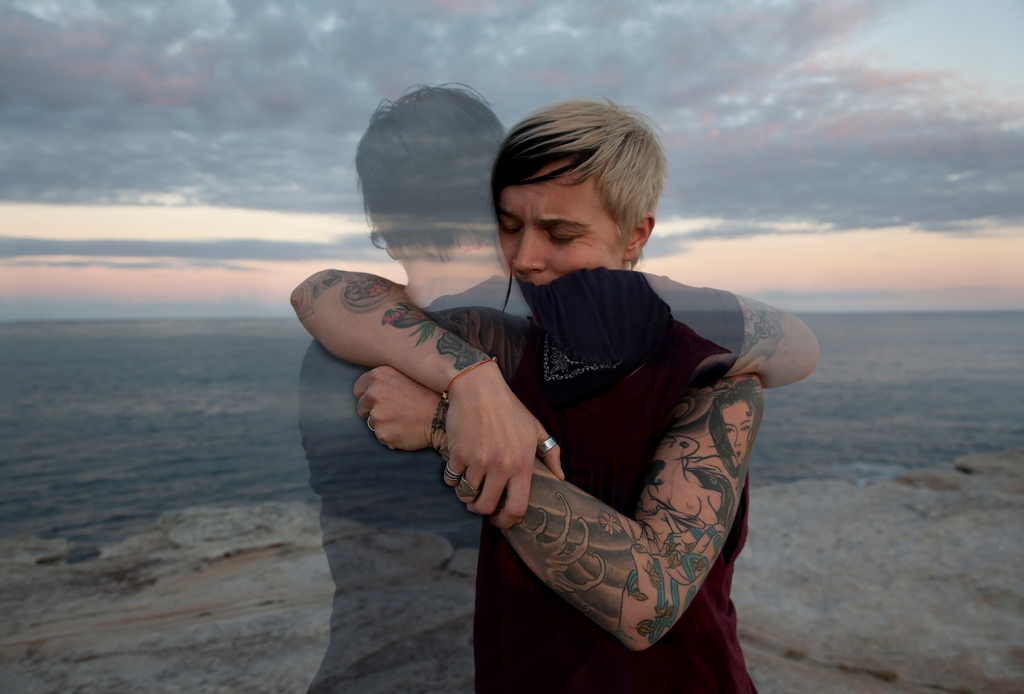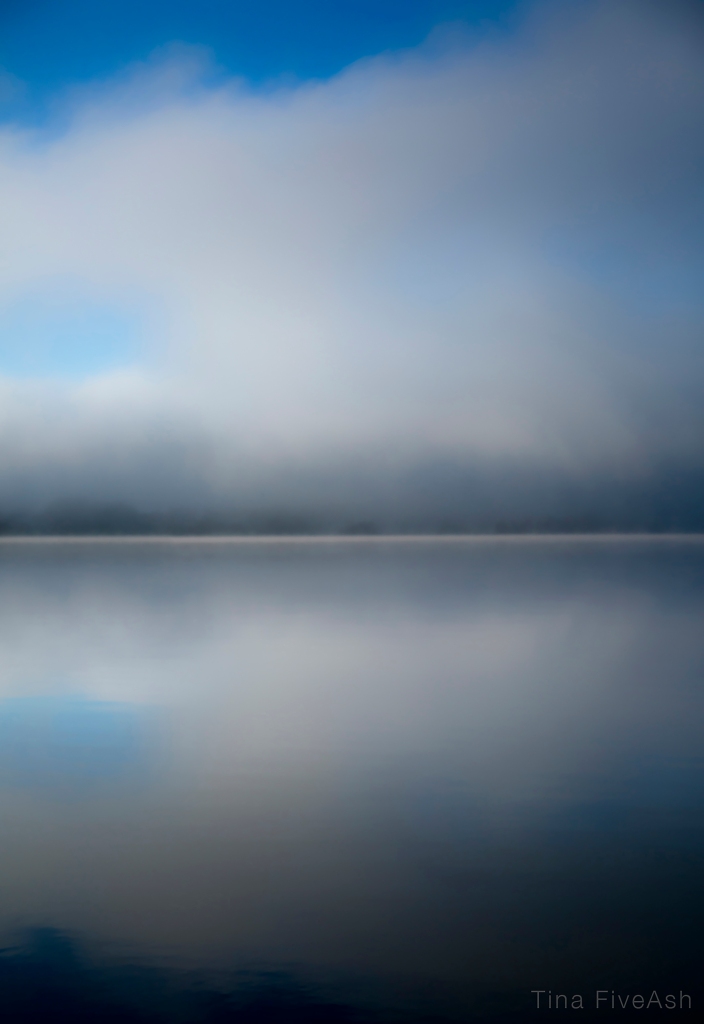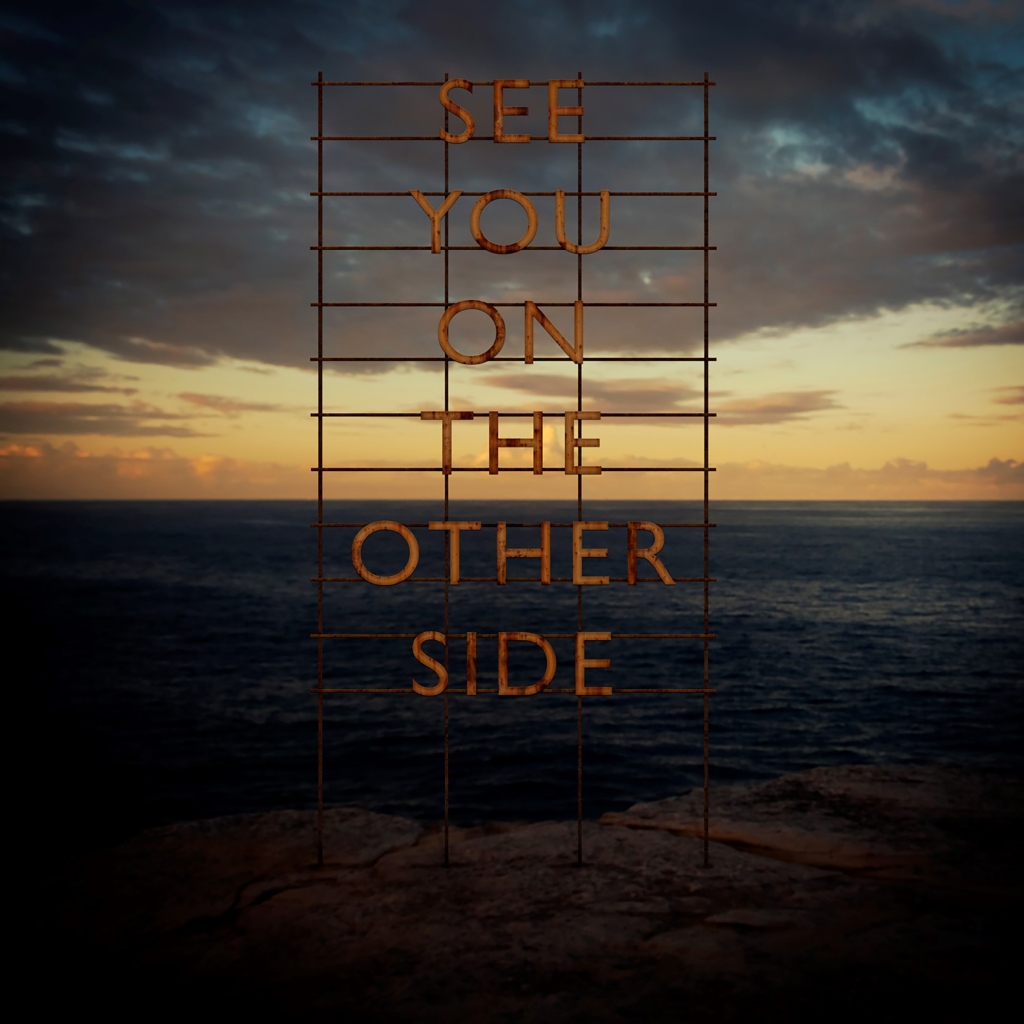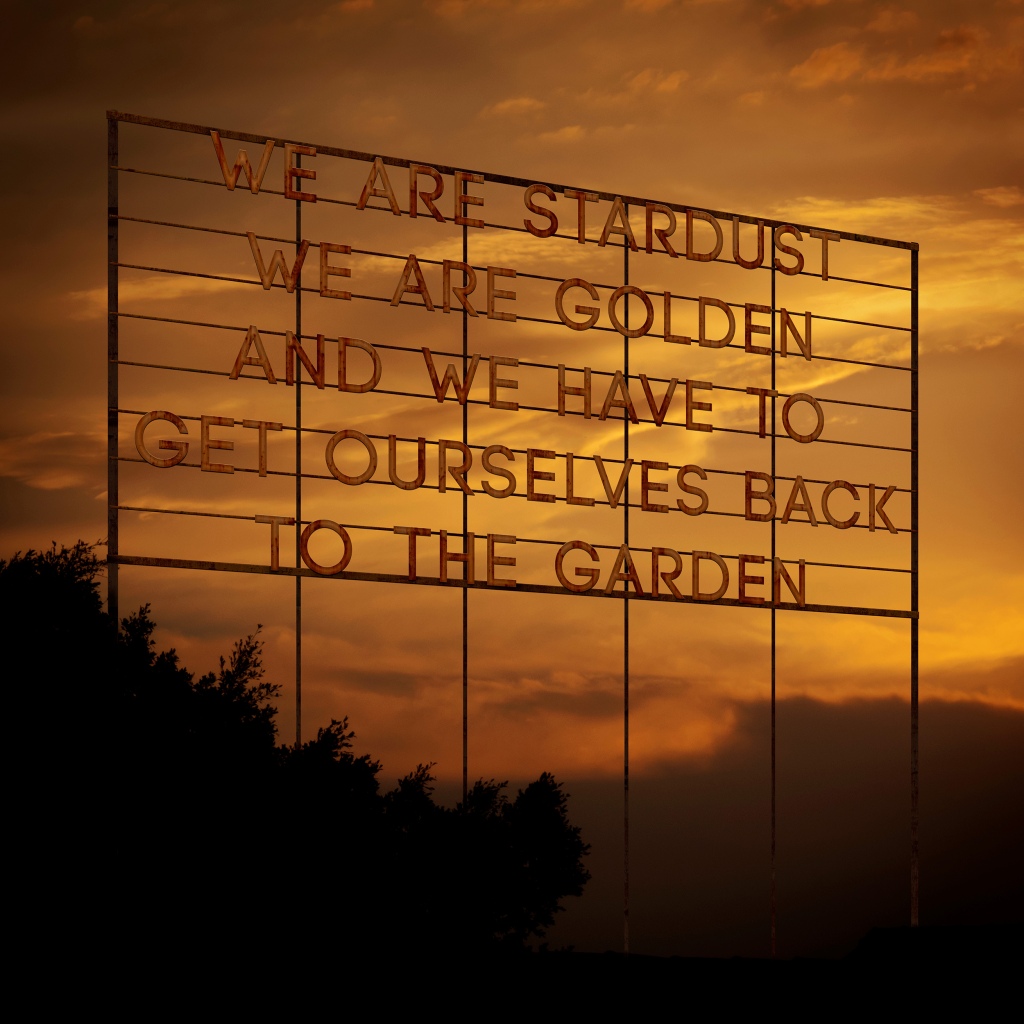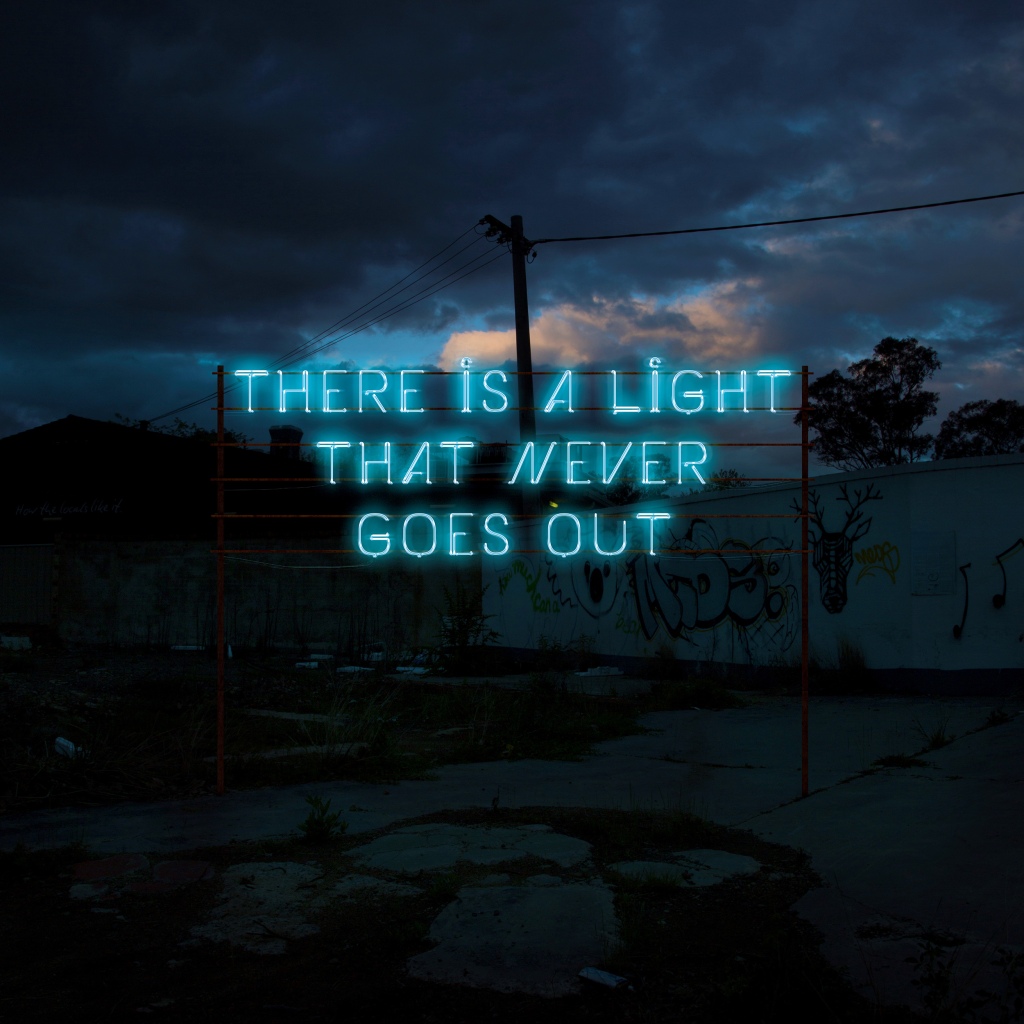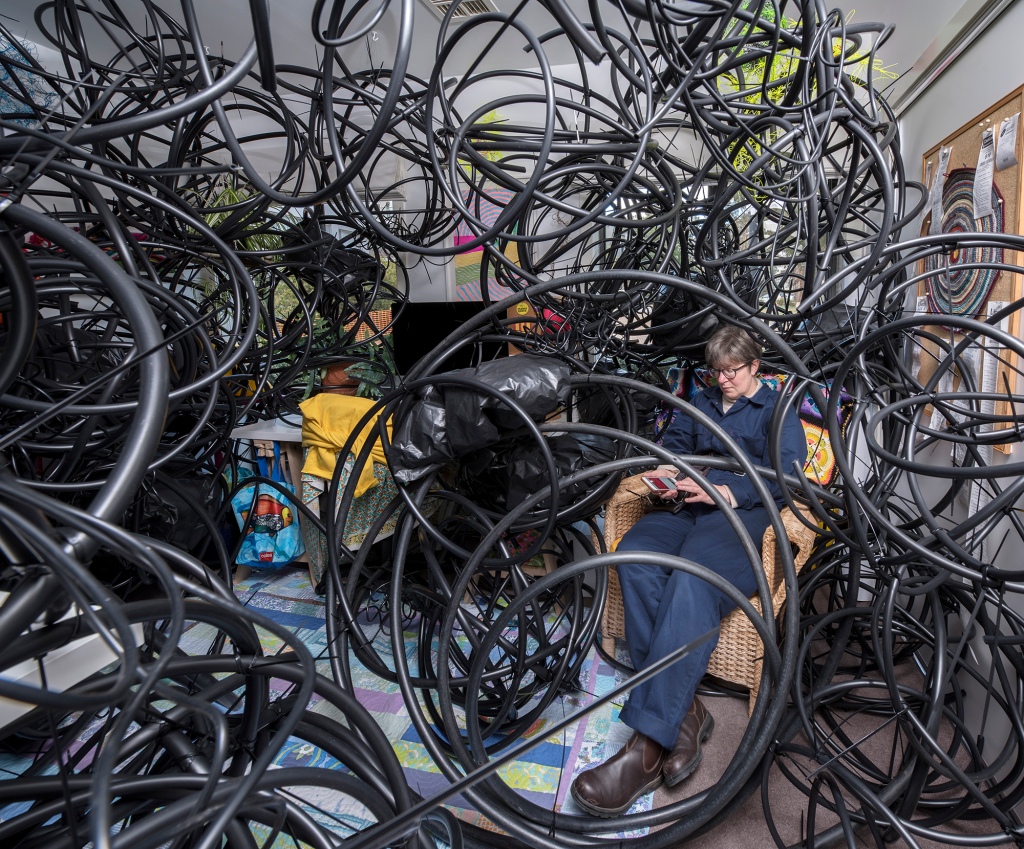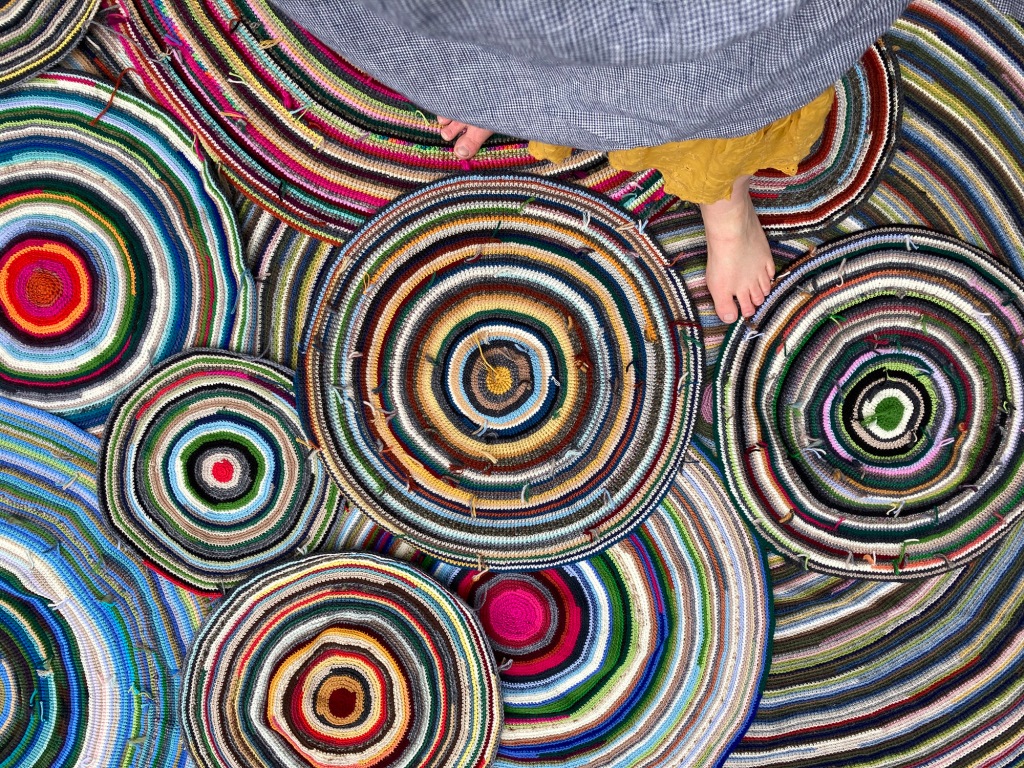Canberra Contemporary Art Space | Until 12 June 2022
Noelene Lucas is a video installation artist with a background in sculpture. Her work addresses our land from ecological and historical perspectives. It has been curated into major exhibitions in Australia, Europe and Asia, awarded three major Australia Council grants, Thailand, Paris and two Australia Council Tokyo residencies, the latter one deeply affecting both her life and art practice.
Birds are disappearing. Common wild birds connect us to nature. The chance of seeing a Kookaburra in SE Australia has halved since 1999. Those are just three of the messages presented on some of the video panels in this thought-provoking exhibition by Lucas.
Other panels display slowly moving clouds and ocean waters overlaid with words such as Ozone (O3), Halons (CBrClF2), Halogenated Gases – Fluorine (F2), and Black Carbon (PM2.5). Those words are about a colourless unstable toxic gas with a pungent odour and powerful oxidizing properties, unreactive gaseous compounds of carbon with bromine and other halogens known to damage the ozone layer – including a poisonous pale-yellow gas that causes very severe burns on contact with skin, and a climate-forcing agent contributing to global warming.

I’m no scientist and had to research the meanings of some words when writing this. Nevertheless, the message about environmental changes and damage had been very clear to me whilst actually viewing the works in the gallery.
Another video panel reminds us – if we need any reminder – that “We are dependent for our wellbeing on the wellbeing of the environment.” And yet another informs us that “Filling the Hunter’s existing 23 massive mine voids will cost $25.3 billion but the government holds only $3.3 billion in bonds.”

This well-presented exhibition leaves visitors in no doubt that environmental issues are important and require urgent attention in order to “Save the planet” – words that passed by, overlaid against clouds, on another video panel.
Bird numbers and habitats have dwindled as we have destroyed many forests and wetlands, plus our previously clean air and water. Birds have disappeared as humans have destroyed their life support systems – as well as our own. So, it is most appropriate that there are also several videos of various birds and of water contaminated with drifting litter. The clear message is everywhere as you walk around the exhibition spending time watching the moving imagery.
Central to Lucas’s work is her investigation of the land from both environmental and historical perspectives. Land, birds and water quality in the light of climate change are key to the environmental research. At the base of all her video work is the exploration of time and fleeting moments.

Every day we hear or read about unprecedented flood or fires, that glaciers are melting faster and faster, that people’s homes and gardens are being inundated by rising sea levels. We are told there’s yet another crisis then, thankfully, that it’s passed.
We only have to consider the recent flood events in NSW and Queensland to appreciate the truth of those words. More crises do keep occurring and many of us now expect that, as a result of climate change inaction, they will only happen more and more frequently – that we are moving towards creating a world that our descendants do not deserve. If any reminder of the problem is needed this exhibition serves that purpose most effectively.
Entanglement highlights so many environmental issues and points to our involvement in the climate change crisis. But it also points to where hope resides – in our contact with other life forms, in seeing and valuing and not being indifferent to the damage that has been done.
This review was published in the Canberra Times of 30.05.22 here. It is also on the Canberra Critics Circle blog here.


